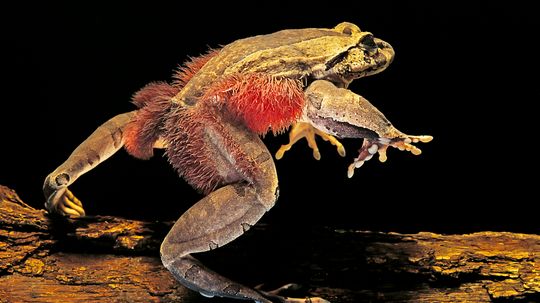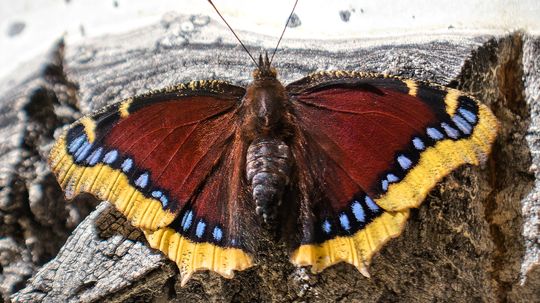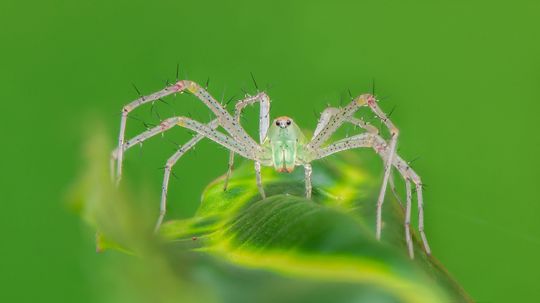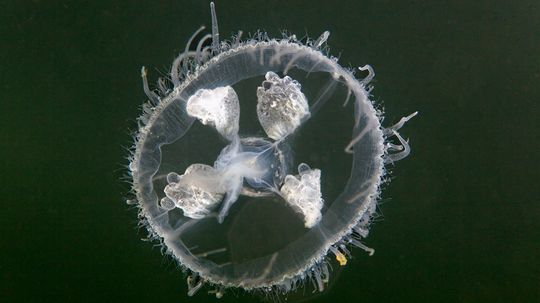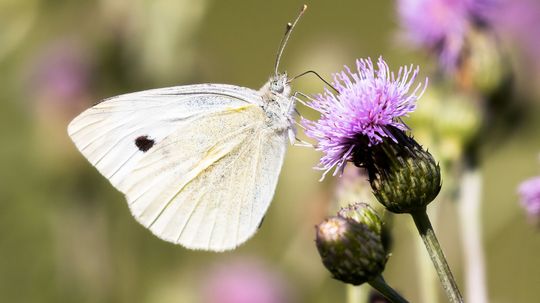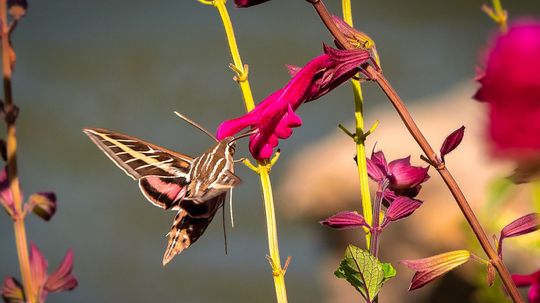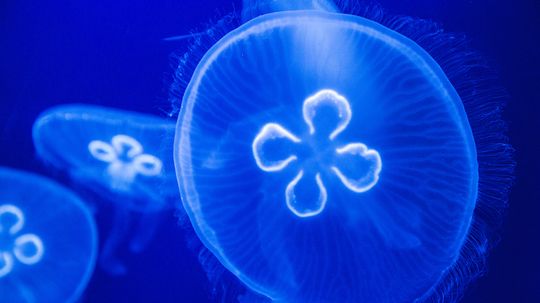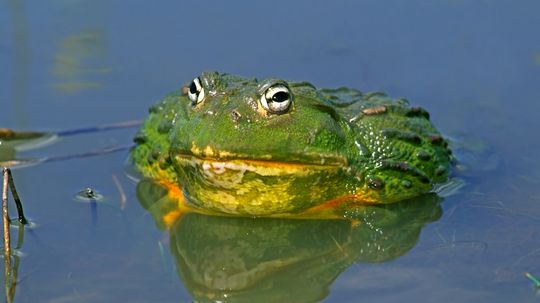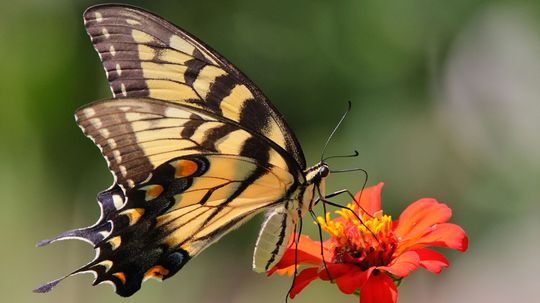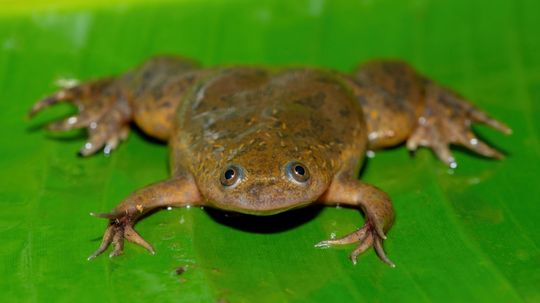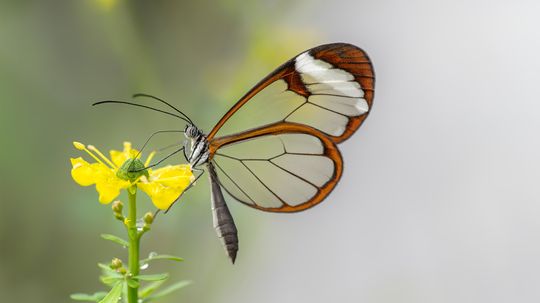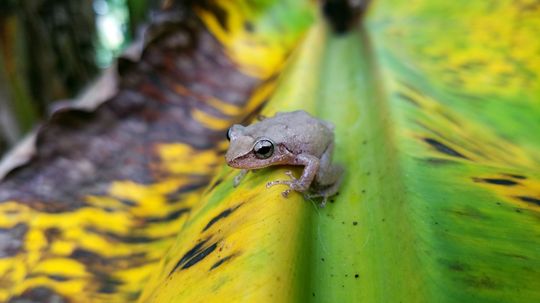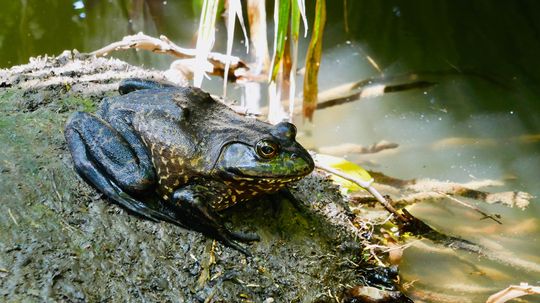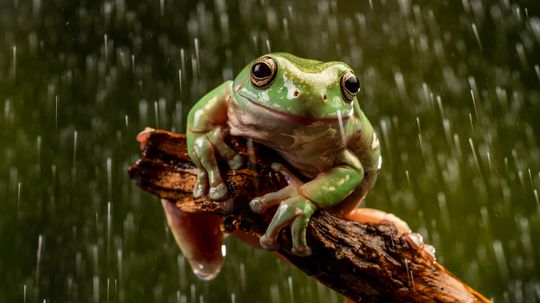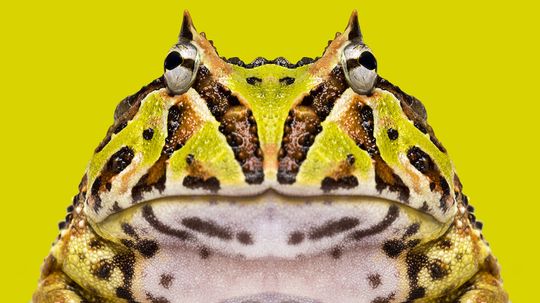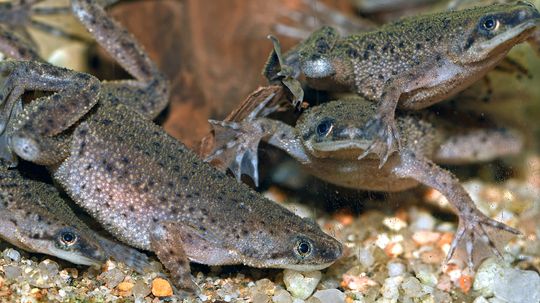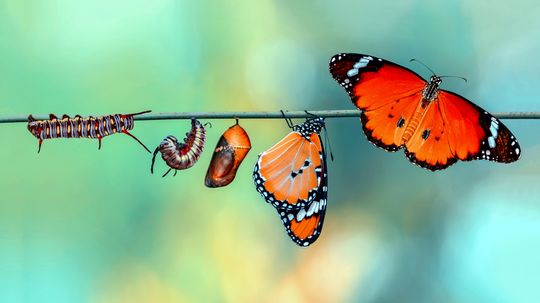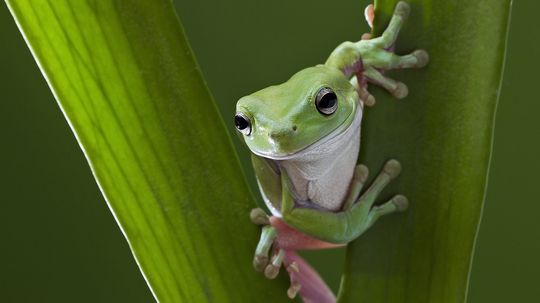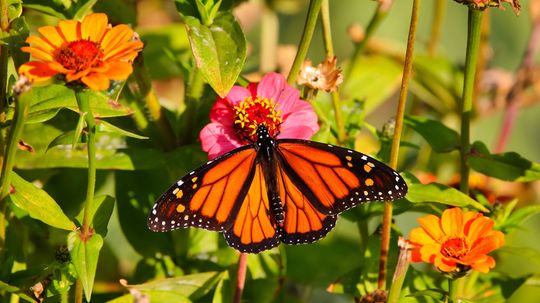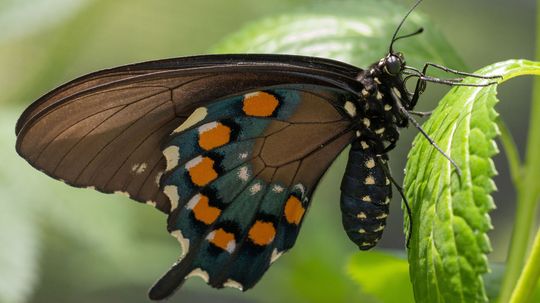Wild Animals
Whether they crawl, fly, swim, slither, walk, run or pounce, wild animals rely on their instincts. Read about all kinds of wild animals, mammals, birds, fish, insects, reptiles and amphibians.
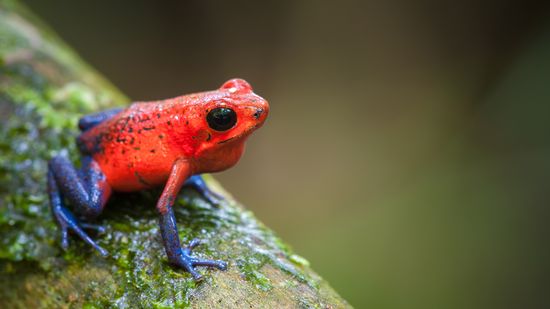
12 Colorful Frog Species: From Tie-dyed Designs to Rare Hues
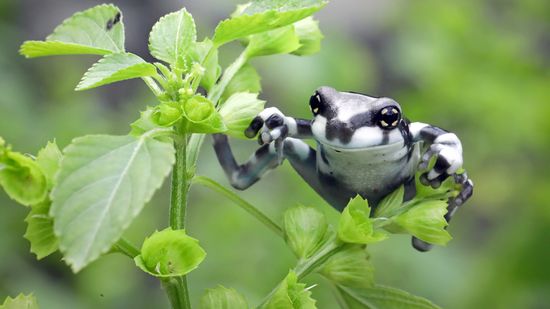
Amazon Milk Frog: Named for Its Defense, Not Its Color
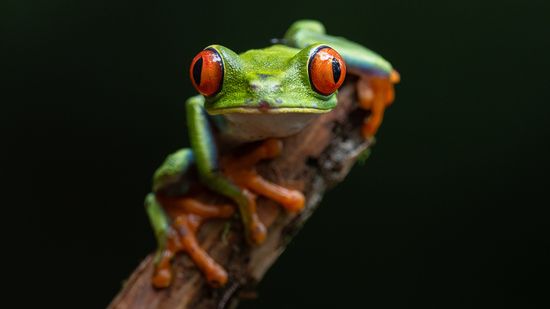
The Red-eyed Tree Frog Has Extremely Sensitive Skin
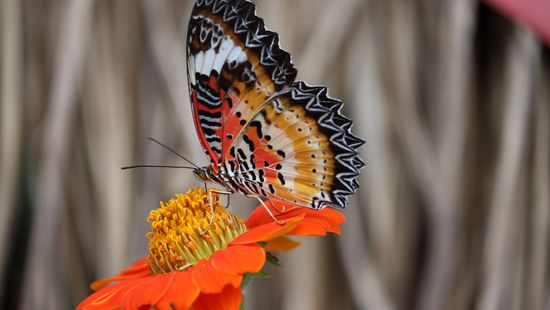
10 Red Butterfly Species Found From India to Florida to Europe
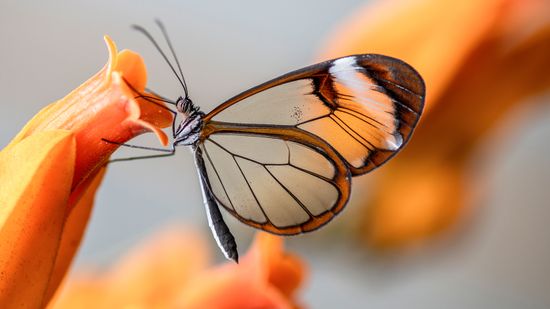
How the Glasswing Butterfly Flutters (Almost) Invisibly
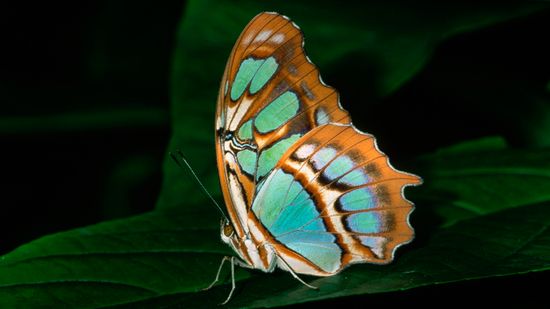
6 Green Butterfly Species Blending in With Their Environments
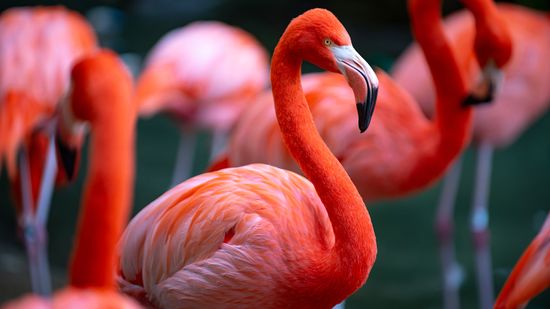
What Is a Group of Flamingos Called? Not a Flock, Another 'F' Word
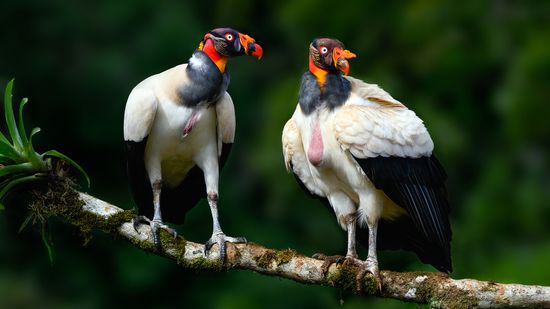
7 Ugliest Bird Species: Evolutionary Qualities That Aren't So Pretty
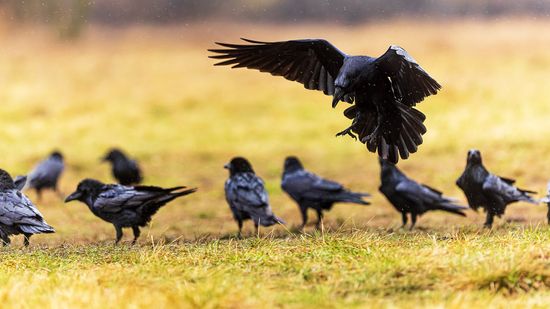
What's a Group of Ravens Called? Not a Murder (That's Crows)
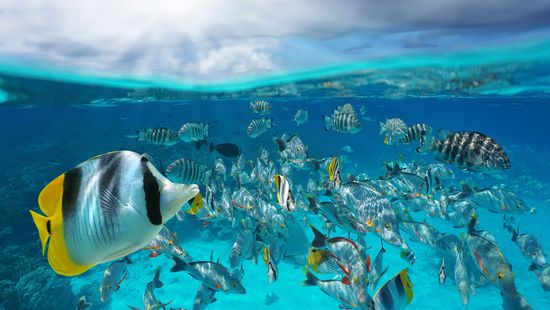
What Is a Group of Fish Called? Not Always a School
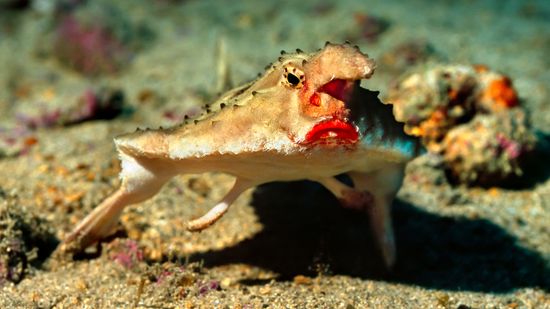
10 Weirdest Fish in the World: Batfish, Hairy Frogfish, and More
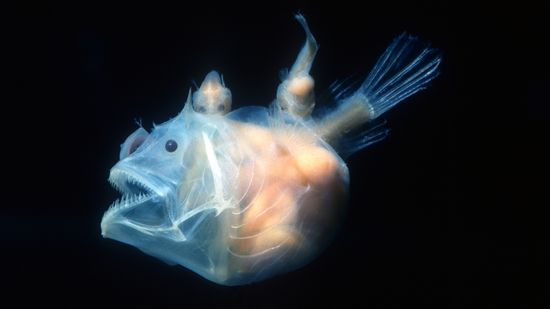
10 Scariest Fish Lurking in Rivers, Deep Ocean Waters, and Shells
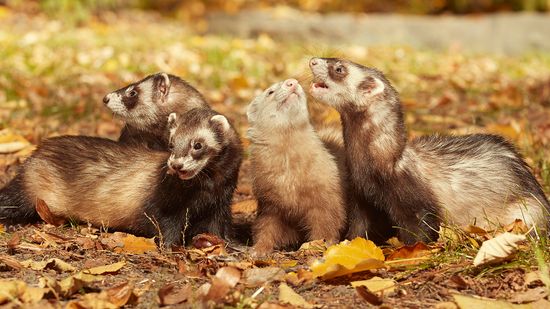
What Is a Group of Ferrets Called? You're Such a Busybody

What Is a Group of Mice Called? Not Always a Colony
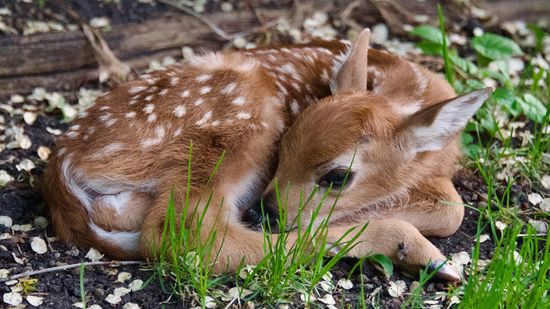
What Is a Baby Deer Called? (Aside From Adorable)
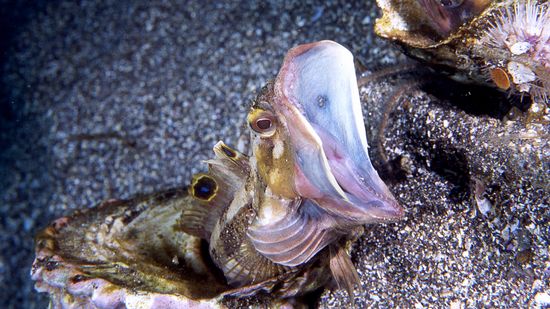
10 of the Scariest Sea Creatures Lurking in the Ocean's Depths
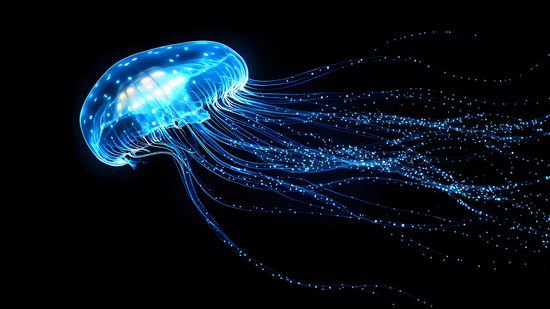
How Bioluminescent Jellyfish Get Their Signature Glow
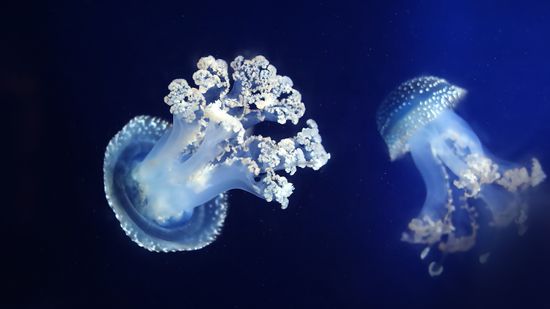
White Spotted Jellyfish: Cute Until They Become Invasive
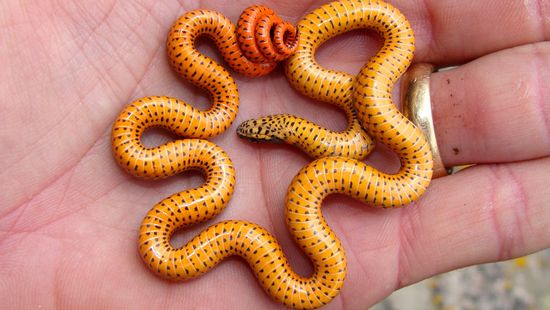
10 Cutest Snake Species That Have Us Squeeing
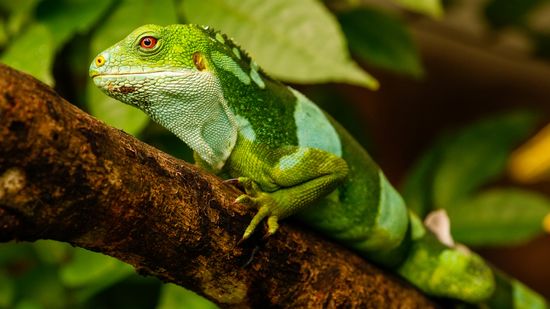
10 Colorful Lizards to Delight Reptile Lovers
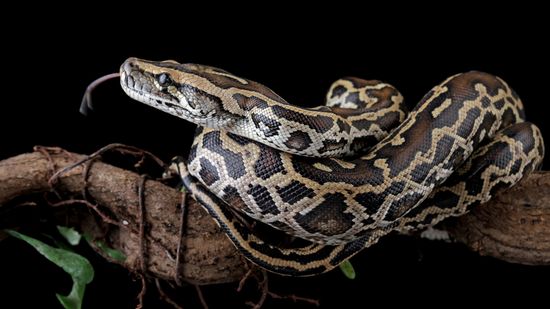
Python vs. Anaconda: Comparing Snakes and Software Languages
Learn More / Page 3
Most frogs hop away from danger. But the hairy frog? It brings its own weapons to the fight—literally. Known for its bizarre defense mechanism, this amphibian snaps its own bones to create claws that pierce through its skin. You read that right.
By Nico Avelle
The mourning cloak butterfly might not win any contests for flashiest insect, but this species breaks the mold in some surprising ways.
By Nico Avelle
Some spiders blend into the background. Others? They demand your attention. Colorful spiders light up forests, flowers, and even backyards with a dazzling range of hues—and there's more to that brilliance than meets the eye.
By Nico Avelle
Advertisement
Freshwater jellyfish may sound like an oxymoron—because jellyfish live in the ocean, right? Not all of them. Craspedacusta sowerbii, also called the peach blossom jellyfish, thrives in rivers, lakes and even gravel pits.
By Nico Avelle
You’ve seen them in your garden, fluttering like confetti across the kale and broccoli. That pale insect flitting around your vegetables? That white butterfly is most likely Pieris rapae, better known as the cabbage white butterfly.
By Nico Avelle
Some moths wear camouflage, blending right into bark or leaves. Others? They're the bold dressers of the insect world. These colorful moth species aren't shy about showing off.
By Nico Avelle
Moon jellyfish might look like ghostly saucers adrift in the blue, but they're more than just ocean ambiance. These translucent animals, known scientifically as Aurelia aurita, are part of a family of jellies that have lives perfectly tuned to drifting through the sea.
By Nico Avelle
Advertisement
The pixie frog is not the kind of frog you'd find hopping harmlessly around your garden pond. Also called the African giant bullfrog, this enormous amphibian is known scientifically as Pyxicephalus adspersus.
By Nico Avelle
The yellow butterfly gives other insects a masterclass in adaptation, camouflage and transformation. One yellow butterfly in particular stands out: the eastern tiger swallowtail.
By Nico Avelle
How do jellyfish reproduce? That depends on which jellyfish you mean.
By Nico Avelle
Meet the African clawed frog, a fully aquatic amphibian that's part living fossil, part lab legend, and part ecological wildcard.
By Nico Avelle
Advertisement
Butterflies aren't just colorful decorations fluttering around flowers. They are one of the most diverse groups of insects, with more than 17,000 known species.
By Nico Avelle
If you've walked through a warm, humid forest in Puerto Rico or parts of Hawaii at dusk, you've likely heard the high-pitched "ko-kee" call of the coqui frog.
By Nico Avelle
You’ve probably heard them before you’ve seen them. The booming "jug-o-rum" call of the bullfrog (sometimes spelled bull frog) is a signature sound in North American wetlands.
By Nico Avelle
If you're thinking about frogs as gross, standoffish creatures, think again. White's tree frog is one of the friendliest, plumpest amphibians you’ll meet.
By Nico Avelle
Advertisement
The horned frog (also called the horned toad or ornate horned frog) belongs to the genus Ceratophrys, a group of amphibians native to South America.
By Nico Avelle
African dwarf frogs are tiny, fully aquatic amphibians that bring big personality to small aquariums. Native to the ponds and slow-moving rivers of Central Africa, the African dwarf frog is a popular choice for pet owners looking for low-maintenance animals with quirky behavior.
By Nico Avelle
Butterflies don’t just pop out of eggs with wings and flair. The butterfly life cycle is one of the most dramatic transformations in the animal kingdom.
By Nico Avelle
The tree frog is a small, agile amphibian best known for its climbing ability and vocal nighttime habits. These frogs are typically found in warm, moist environments across the central and southeastern United States, though they can thrive in many habitats with a nearby water source.
By Nico Avelle
Advertisement
The monarch butterfly (Danaus plexippus) is one of the most iconic insects in the natural world.
By Nico Avelle
Few insects are as eye-catching as the swallowtail butterfly. Known for their vibrant colors and uniquely shaped hind wings, swallowtails belong to the family Papilionidae and are found worldwide except in the Arctic regions.
By Nico Avelle
The Pacman frog, also known as the South American horned frog, is one of the most popular amphibians in the pet world—and for good reason.
By Nico Avelle
If you're out during a desert rainstorm and hear something that sounds like a squeaky toy, don't panic. You might be hearing the rain frog—a tiny, burrowing amphibian that spends most of its life hidden underground.
By Nico Avelle
Advertisement
The avian world is full of wonder, but some species stand out as truly unusual. From strange seabirds to flightless creatures that look like dinosaurs, these are the weird birds that have us doing double-takes.
By Nico Avelle
Bees are some of the world’s most important pollinators, but not all species behave the same. When it comes to bumble bee vs. carpenter bee species, these two often get confused.
By Nico Avelle
